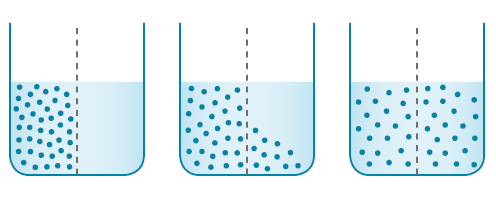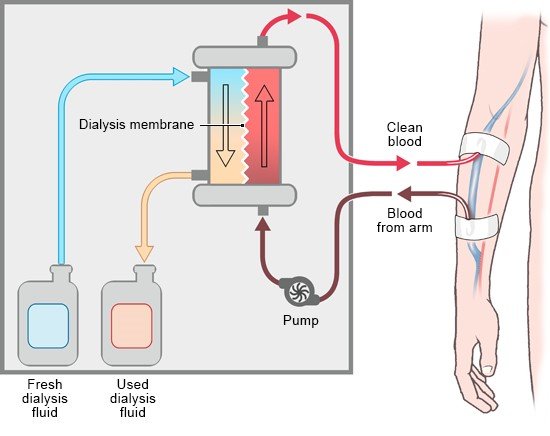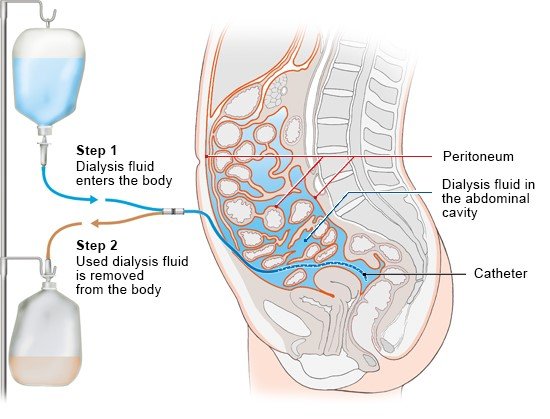How does dialysis use the principle of diffusion?
In order to understand what diffusion is, it may help to picture a simple experiment from science class: An empty glass box is separated into two halves by a thin wall. The wall has fine pores (tiny holes) in it. A clear fluid is then poured into the right half, while a colored fluid is poured into the left half. What happens next? The colored particles in the left half will gradually move (diffuse) through the pores in the permeable wall into the clear fluid in the right half. Eventually, both fluids will be the same color. The number of colored particles in the water (the concentration) is then the same on both sides of the wall.
The next step is to empty the fluid from the right half and replace it with fresh, clear fluid. Again, colored particles will move (diffuse) from the left half to right the right half and spread evenly throughout the entire box. If you repeat this procedure several times, eventually almost no color will be left in the half that was originally colored.
Dialysis works in a similar way: Blood is like the colored fluid. It contains many substances that are dissolved into particles. In dialysis, it is brought very close to a clear liquid (dialysis fluid). The blood and dialysis fluid are separated only by a thin wall, called a semipermeable membrane. This membrane allows particles that the body needs to get rid of to pass through it, but doesn’t let important parts of the blood (e.g. blood cells) pass through.



